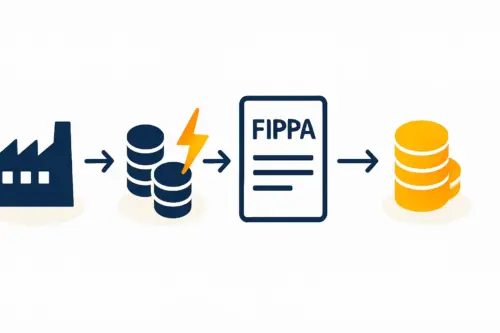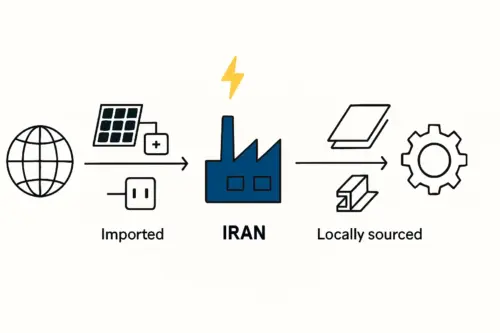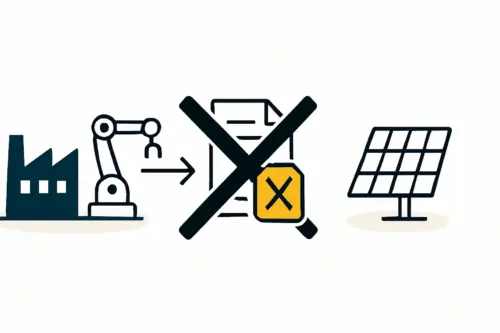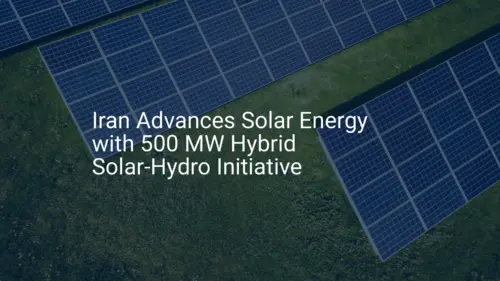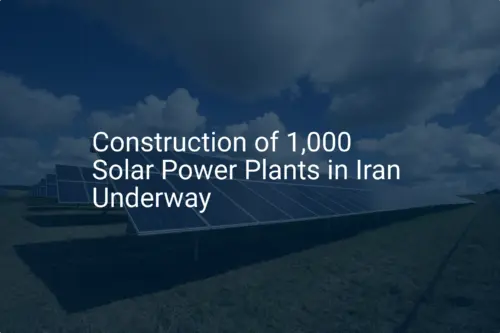An investor can build a state-of-the-art solar module factory in Iran, complete with efficient machinery and a skilled workforce. Yet the venture’s success hinges not just on production quality, but on the ability to deliver the final product to customers in neighboring countries. The journey of a solar panel from the factory floor to an installation site in Iraq, Afghanistan, or Pakistan is a complex one, shaped by infrastructure, regulations, and regional trade dynamics.
Understanding this logistical framework is critical for a successful business plan. This guide outlines the primary considerations for exporting Iranian-made solar modules, focusing on transportation, customs procedures, and the strategic trade environment that shapes these key export corridors.
The Strategic Advantage of Iranian Solar Manufacturing for Regional Export
For entrepreneurs considering market entry, Iran offers a compelling geographic advantage. Its shared borders with major emerging energy markets like Iraq, Pakistan, and Afghanistan create a unique opportunity. Exporting to these nations via land routes offers substantial savings in time and cost compared to sourcing modules from East Asia, which involves lengthy sea voyages and additional inland transport.
This proximity allows manufacturers to be more responsive to burgeoning regional demand. Countries like Iraq, for instance, are actively seeking to rebuild and diversify their energy infrastructure, creating a consistent need for readily available renewable energy components. A manufacturing hub in Iran is strategically positioned to meet this demand far more efficiently than distant competitors.
Navigating the Transportation Infrastructure
A successful export operation relies on the physical infrastructure connecting the producer to the consumer. For Iran and its neighbors, this primarily involves a network of land-based border crossings, each with its own characteristics and challenges.
To Iraq
Iraq represents one of the largest potential markets for Iranian solar modules. Trade flows along several key land routes, most prominently:
- Mehran-Zurbatiyah: A primary crossing point for goods destined for Baghdad and central Iraq.
- Shalamcheh-Basra: Crucial for accessing southern Iraq’s major commercial hub, Basra.
- Parviz Khan: An important gateway to the Kurdistan Region of Iraq.
Although these routes are well-established, businesses must plan for potential delays. Road quality varies, and border crossings often face congestion from high trade volumes and slow administrative processing. Effective logistical planning involves selecting the most efficient route based on the final destination and building contingency time into delivery schedules.
To Afghanistan
The Dogharoun-Islam Qala border crossing is the principal commercial artery between Iran and Afghanistan. This crossing provides direct access to Herat, a major economic center, and serves as a gateway for distributing goods across the country. When planning shipments along this route, security is paramount. Partnering with experienced freight forwarders who have established protocols for secure transit is essential to mitigate risks.
To Pakistan
The Mirjaveh-Taftan border is the main official land route for trade between Iran and Pakistan. The strategic development of the Port of Chabahar also offers a potential multimodal alternative, combining sea and land transport to access Pakistan’s coastal regions and beyond. As an investor evaluates the total solar factory setup costs, factoring in the cost and reliability of these specific export routes is essential.
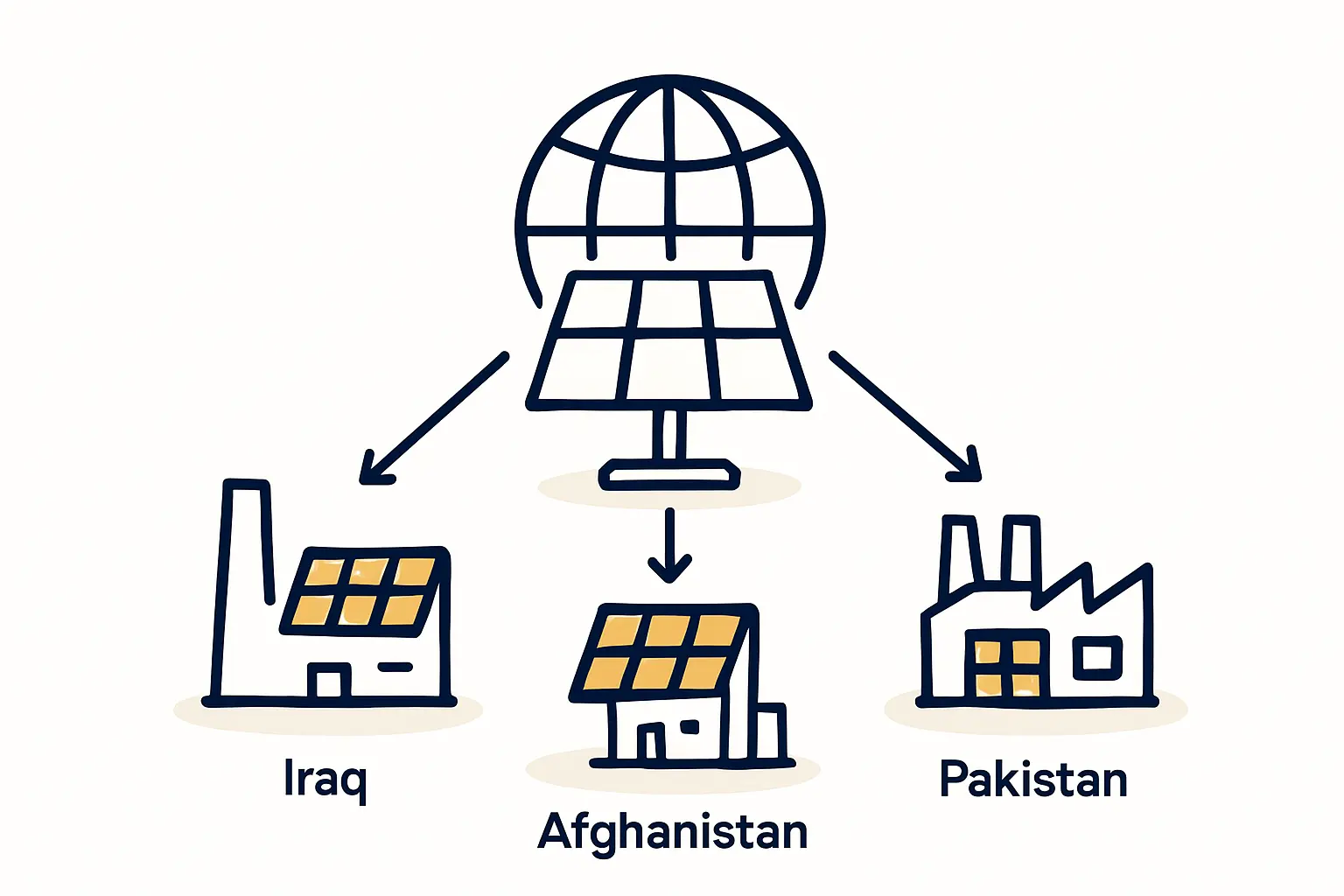
Ready to make big Profits?
The solar Industry is Booming
WE HELP NEWCOMERS to the solar industry start their own solar module production line. Customers can make BIG PROFITS by selling modules and finding investors, without wasting money and time on things they don't need!
Understanding Customs Procedures and Documentation
Crossing international borders smoothly is less about the physical journey and more about meticulous paperwork. Errors or omissions in documentation are among the most common reasons for costly delays, seizures, and fines. Based on experience from J.v.G. turnkey projects in emerging markets, even minor discrepancies can halt a shipment for weeks.
Key documents required for exporting solar modules typically include:
- Commercial Invoice: Details the transaction between the seller and buyer.
- Packing List: Specifies the contents, weight, and dimensions of each crate or pallet.
- Certificate of Origin: Verifies that the goods were manufactured in Iran, which can be crucial for qualifying for preferential tariffs.
- Bill of Lading (for sea freight) or CMR (for road freight): The contract between the owner of the goods and the carrier.
Each solar module must be correctly classified using the Harmonized System (HS) code. This international standard determines the tariffs and duties for the product. Using an incorrect code can lead to significant financial penalties.
Leveraging Regional Trade Agreements
Iran is a member of the Economic Cooperation Organization (ECO), which also includes Pakistan and Afghanistan. The ECO Trade Agreement (ECOTA) aims to reduce tariffs and non-tariff barriers among member states. While such agreements provide a favorable policy framework, investors must conduct due diligence to understand their practical implementation at the specific border crossings they intend to use.
A trade agreement, however, does not guarantee a frictionless process. On-the-ground realities, administrative efficiency, and political relations all influence how smoothly goods flow. A comprehensive business plan should account for both the opportunities these agreements present and the real-world challenges of capitalizing on them. Success often depends on a clear understanding of the entire process, from choosing the right solar manufacturing equipment to navigating the final customs check.
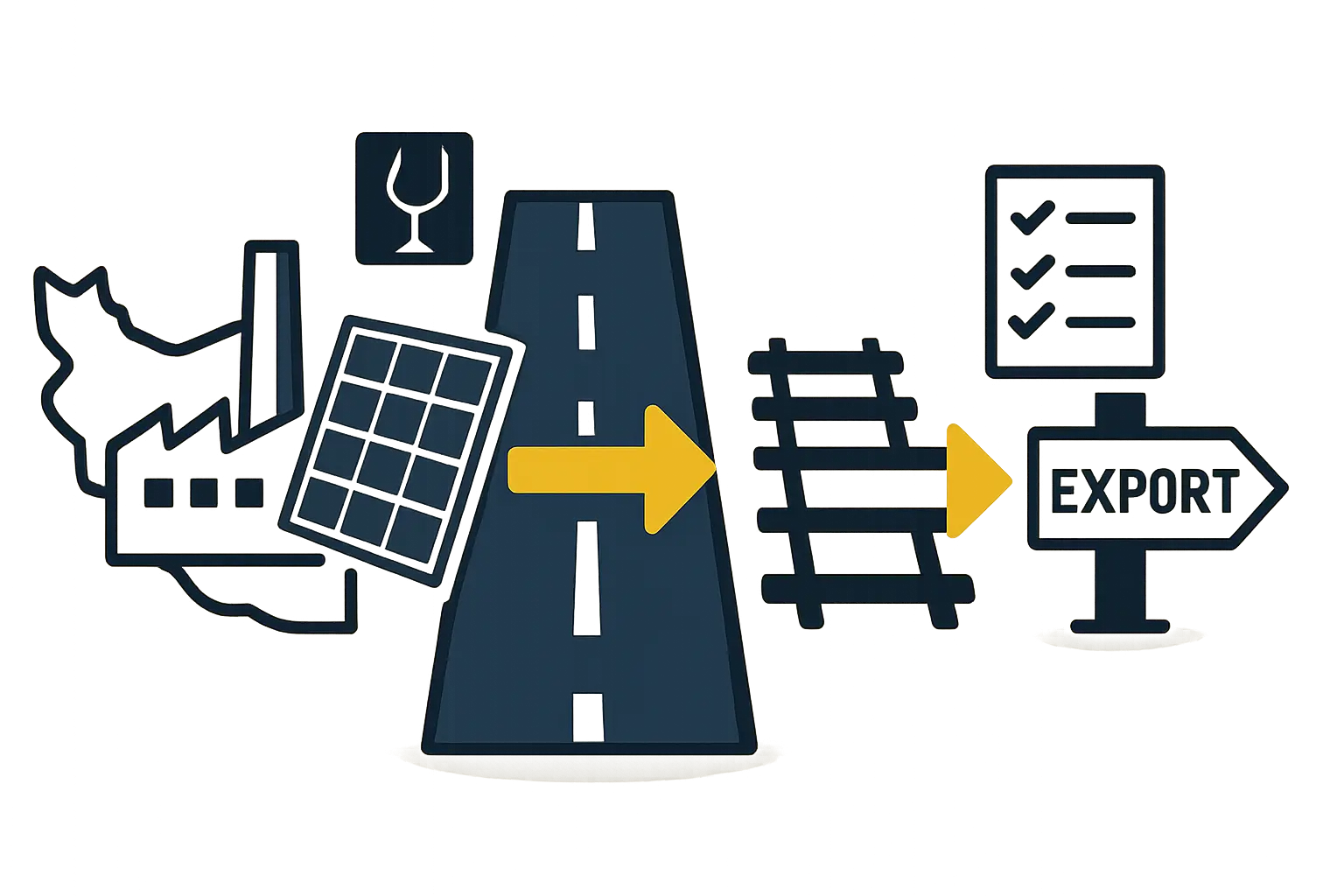
Risk Management in Cross-Border Logistics
Exporting high-value goods like solar modules carries inherent risks. A robust risk management strategy is essential to protect the investment.
Insurance
Comprehensive freight insurance is not optional—it is a necessity. “All Risks” coverage is highly recommended, as it protects against loss or damage from a wide range of external causes during transit. Given that solar panels are sensitive to physical shock, which can cause invisible microcracks, proper insurance is a critical safeguard.
Security
On certain routes, particularly into Afghanistan, security is a primary concern. Key steps include vetting transportation partners for their security protocols, considering the use of convoy services, and having real-time tracking capabilities for the shipment.
Payment Terms
Using secure payment mechanisms protects both the exporter and the importer. A Letter of Credit (L/C) issued by a reputable bank is a common instrument in international trade. It guarantees payment to the exporter once all terms of the agreement, including successful delivery of goods, are met.
Frequently Asked Questions (FAQ)
What are the most common logistical delays when exporting from Iran?
The most frequently encountered delays stem from incomplete or inaccurate documentation, followed by congestion at border crossings. Mismatches between the commercial invoice and the packing list, or an incorrect HS code, can lead to extended inspections and customs holds.
How are solar modules typically packaged for road freight?
To prevent damage and microcracks, solar modules are packaged vertically in specialized wooden crates or on reinforced pallets. They are separated by protective materials and securely strapped to prevent movement and vibration during rough road transport.
Is it better to manage logistics in-house or use a freight forwarder?
For new entrants into the manufacturing and export market, partnering with a reputable freight forwarder is highly recommended. These specialists have deep knowledge of regional customs regulations, established relationships with carriers, and experience navigating the unique challenges of each border crossing, which can save significant time and prevent costly errors.
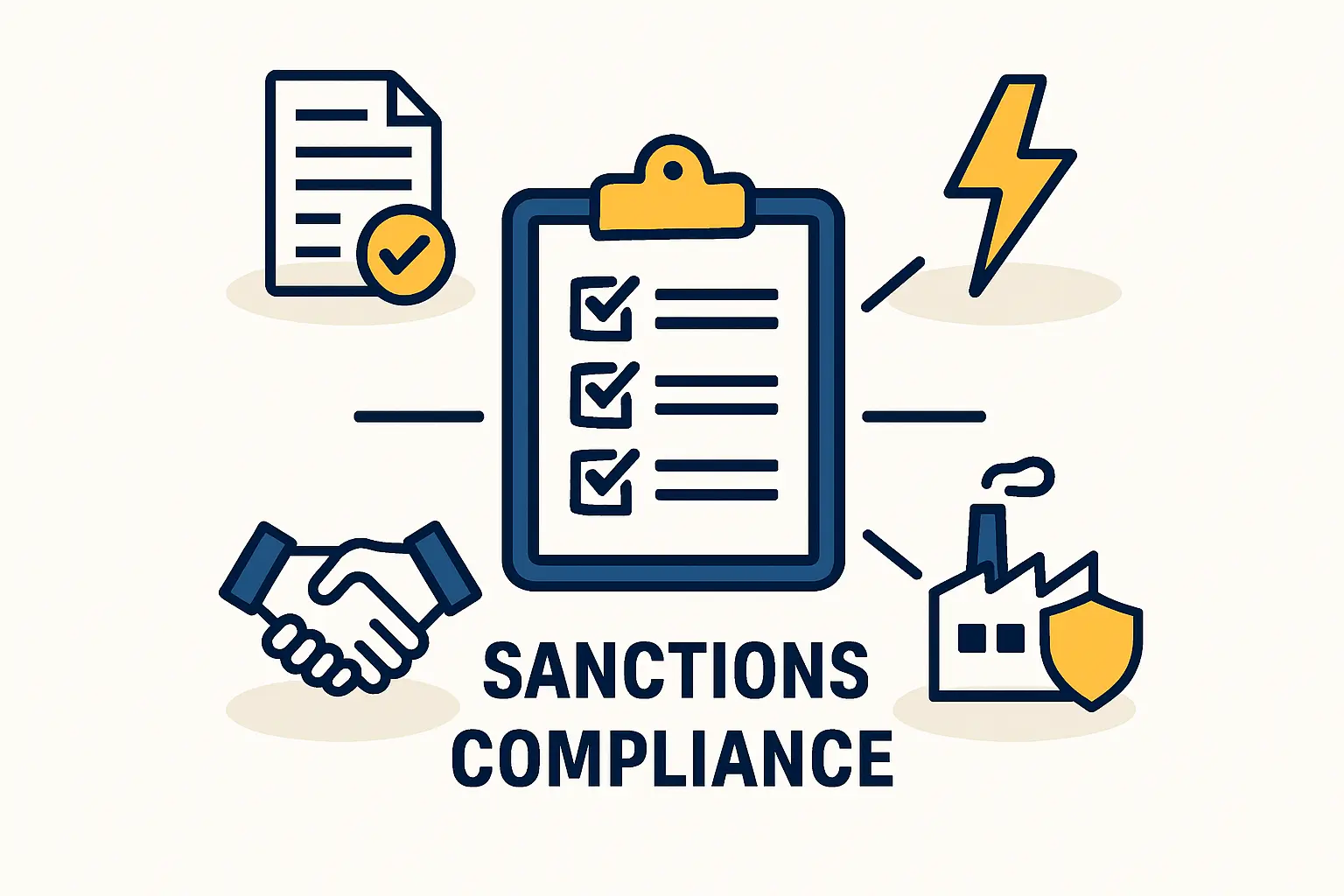
Next Steps in Planning Your Export Strategy
The opportunity to supply regional markets with Iranian-made solar modules is substantial, but it requires a diligent and informed approach to logistics. A successful operation is built on a foundation of thorough planning that treats the supply chain with the same importance as the production line itself.
The next step for any serious investor is to integrate these external market factors into a comprehensive business model. Understanding the complete journey from initial investment to final delivery is the first step toward building a resilient and profitable solar manufacturing enterprise. For a holistic view of the entire process, a foundational understanding of how to start a solar module factory is essential. Platforms like pvknowhow.com provide structured guidance to help entrepreneurs develop such a comprehensive plan, ensuring that logistical considerations are addressed from the very beginning.



